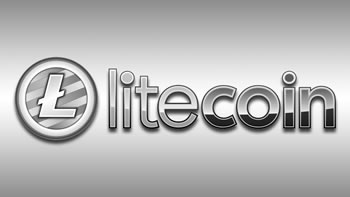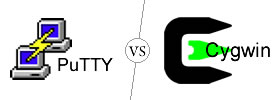Difference between Bitcoin and Litecoin
Key Difference: Bitcoin is the first fully implemented peer-to-peer cryptocurrency protocol. Litecoin is another peer-to-peer cryptocurrency, which is inspired by and technically nearly identical to Bitcoin.
 Bitcoin and Litecoin are both types of digital cryptocurrencies. A digital currency is any currency that is used online as opposed to traditional currencies which have notes and coins. Digital currencies work completely like traditional currencies, especially since most of the financial transactions today happen digitally. However, digital currencies differ in one major aspect; they are usually not backed by any particular government or country.
Bitcoin and Litecoin are both types of digital cryptocurrencies. A digital currency is any currency that is used online as opposed to traditional currencies which have notes and coins. Digital currencies work completely like traditional currencies, especially since most of the financial transactions today happen digitally. However, digital currencies differ in one major aspect; they are usually not backed by any particular government or country.
Cryptocurrencies are types of digital currencies. The advantage that cryptocurrencies have over other digital currencies is that they use cryptology to ‘implement a distributed, decentralized and secure information economy.’ This means that no one knows who owns the account or how much does he or she have. Furthermore, all digital currencies are decentralized, which means that there is no central regulatory authority controlling the distribution of the currency. While, some may call this advantageous, other claim that this increases the chances of misuse of the currency by corrupt consumers. In fact, some cryptocurrencies have been used for payments in illegal activities.
Bitcoin is the first fully implemented peer-to-peer cryptocurrency protocol. While, the idea of cryptocurrency predates Bitcoin, it is responsible for bringing the concept into practicality and of making it popular for the general public. The Bitcoin protocol was first released in 2009 by Satoshi Nakamoto. While the person is a pseudonym, the protocol was ground breaking, which changed the future of currencies, finance and economy as we knew it. Furthermore, the Bitcoin protocol was released as an open source software, which ensured that everyone could take a look and learn how Bitcoin operated.
Bitcoins can be bought and sold on exchanges. The price of a single Bitcoin varies depending on the demand of bitcoins. In 2011, the value of one bitcoin rose rapidly from about US$0.30 to US$32. In January 2014, the value of one bitcoin had peaked at over US$1070.
Similar to Bitcoin is another cryptocurrency, Litecoin. Litecoin is also a peer-to-peer cryptocurrency and open source software project. In fact, it is directly inspired by Bitcoin, and hence is technically identical to it. The currency was launched on 7 October 2011. Like Bitcoin, Litecoin also does not have a central regulatory authority. Litecoin aimed to improve on the Bitcoin formula and it has in fact been touted as “an alternative (or possibly even successor) to Bitcoin” by the Wall Street Journal, CNBC and The New York Times. In February 2014, Litecoin was trading at around US$20.
 Still, there are some differences between the two. First and foremost, Bitcoin is older and introduced the world to cryptocurrencies, whereas it can be said that Litecoin is a bit of a copy of Bitcoin. Bitcoin is more famous than Litecoin, and has a bigger market capitalization, which is probably why thousands of retail vendors actually accept Bitcoin as currency. However, there are more litecoins available in the market than bitcoins. Bitcoin will stop production of bitcoins after it reaches 21 million bitcoins, whereas Litecoin will stop production after it reaches 84 million litecoins.
Still, there are some differences between the two. First and foremost, Bitcoin is older and introduced the world to cryptocurrencies, whereas it can be said that Litecoin is a bit of a copy of Bitcoin. Bitcoin is more famous than Litecoin, and has a bigger market capitalization, which is probably why thousands of retail vendors actually accept Bitcoin as currency. However, there are more litecoins available in the market than bitcoins. Bitcoin will stop production of bitcoins after it reaches 21 million bitcoins, whereas Litecoin will stop production after it reaches 84 million litecoins.
Another major difference is that Bitcoin releases a block every 10 minutes. A block is a list of all the transactions that take place using Bitcoin. In addition, it also keeps track of new coins being generated. Litecoin, on the other hand, releases a block every 2.5 minutes, a frequency 4 times as that of Bitcoin. However, this does not meant that Litecoin has more transactions than Bitcoin, but that its block size is smaller. This allows the block to be mined faster.
Furthermore, Litecoin touts itself on being able to be mined on consumer-grade hardware, i.e. regular computers and GPUs (graphic processing units) that most people already have. It has a memory-hard, scrypt-based mining proof-of-work algorithm that allows it to be mined on consumer-grade hardware. On the other hand, while Bitcoin was able to be mined on consumer-grade hardware, the increasing difficulty of getting a block and the increased number of transactions, make it difficult now. Now, it is better to have GPUs, FPGA (field programmable gate array), or ASIC (application specific integrated circuit) in order to mine bitcoins.
Comparison between Bitcoin and Litecoin:
|
|
Bitcoin |
Litecoin |
|
Definition |
The first fully implemented peer-to-peer cryptocurrency protocol |
A peer-to-peer cryptocurrency inspired by and technically nearly identical to Bitcoin |
|
Type of |
Digital Cryptocurrency |
Digital Cryptocurrency |
|
Launched |
3 January 2009 |
7 October 2011 |
|
Symbol |
฿ |
Ł |
|
Unit |
BTC or less commonly, XBT |
LTC |
|
Subunit |
0.01 = cBTC (centicoin) 0.001 = mBTC (millicoin) 0.000001 = µBTC (microcoin) 0.00000001 = satoshi |
0.001 = mLTC (millicoin) 0.000001 = µLTC (microcoin) 0.00000001 = Smallest Unit |
|
Regulatory Authority |
No central regulatory authority |
No central regulatory authority |
|
Value (on February 4, 2014) |
1 Bitcoin = US$ 839.54 |
1 Litecoin = US$ 21.81 1 Litecoin = 0.03 BTC |
|
Scope |
Largest Cryptocurrency |
Second Largest Cryptocurrency |
|
Market capital (on February 4, 2014) |
$ 10,370,165,988 |
$ 554,152,449 |
|
Mined Coins (on February 4, 2014) |
12,311,050 |
25,413,254 |
|
Users |
International |
International |
|
Inflation |
Rate halves every 4 years |
Rate halves every 4 years |
|
Final Total |
21 million |
84 million LTC |
|
Method |
Increasing difficulty per every 2016 blocks produced |
Increasing difficulty per every 2016 blocks produced |
|
Algorithm |
SHA-256 |
Scrypt |
|
Mined using |
GPUs, FPGA, or ASIC |
Consumer-grade hardware, such as regular computers and GPUs |
Image Courtesy: intomobile.com, burbuja.info









Add new comment